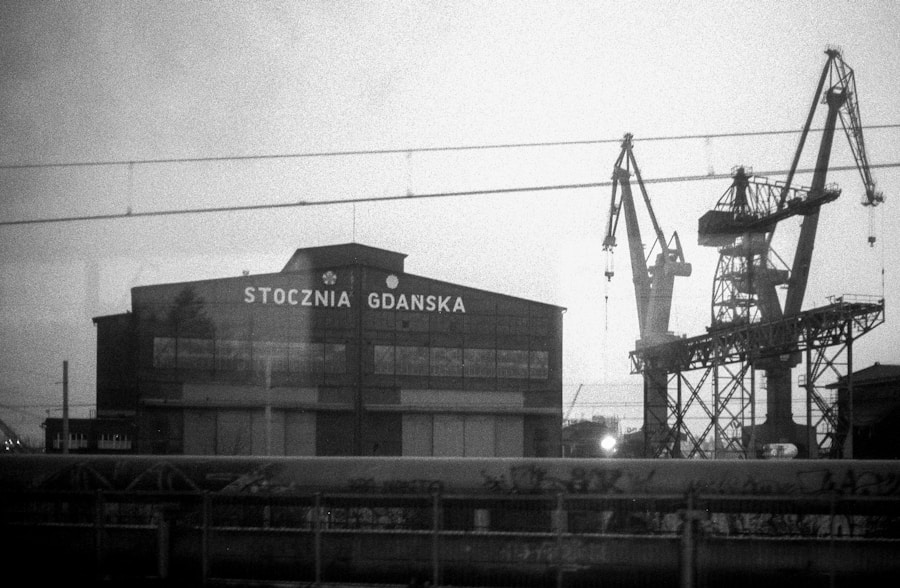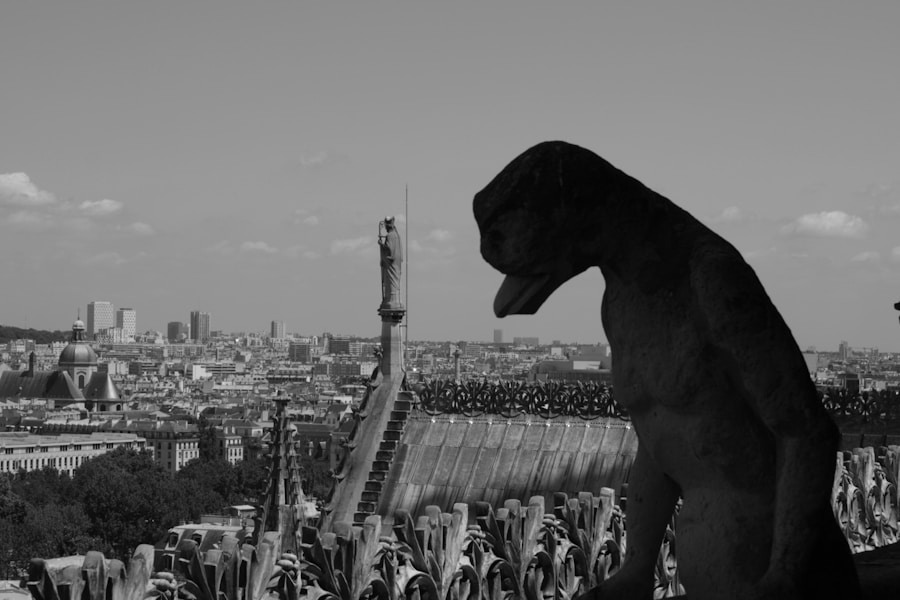Toho Studios, a name synonymous with Japanese cinema, has carved a niche in the global film industry since its inception in 1932. You may recognize it as the birthplace of iconic monsters, particularly Godzilla, who has become a cultural phenomenon. The studio’s influence extends beyond just monster movies; it has played a pivotal role in shaping the landscape of Japanese filmmaking.
With a rich history that spans decades, Toho has not only produced films that entertain but also those that provoke thought and inspire creativity. As you delve into the world of Toho Studios, you will discover a treasure trove of cinematic innovation. The studio has been at the forefront of technological advancements in film production, often pushing the boundaries of what was possible in visual storytelling.
From its early days of black-and-white films to the vibrant color palettes of later productions, Toho’s evolution reflects broader trends in the film industry while maintaining a unique identity. Understanding Toho’s journey is essential to appreciating its contributions to cinema, particularly during the transformative era of the 1970s.
Key Takeaways
- Toho Studios is a renowned Japanese film production company known for its iconic Godzilla films and innovative use of film stock.
- The 1970s saw a shift in film stock technology, with the introduction of new color processes and higher sensitivity emulsions.
- Toho Studios embraced these advancements, utilizing new film stocks to enhance the visual quality of their films in the 1970s.
- Classic Godzilla films from the 1970s underwent technical analysis, revealing the impact of film stock on their visual aesthetics and special effects.
- A comparison of film stock in Godzilla films highlights the evolution of Toho Studios’ use of different stocks and their influence on the overall look of the films.
Overview of Film Stock in the 1970s
The 1970s marked a significant period in the evolution of film technology, characterized by advancements in film stock that revolutionized how stories were told on screen. During this decade, filmmakers had access to a variety of film stocks that offered different aesthetic qualities and technical capabilities. You might find it fascinating that this era saw the introduction of faster films, which allowed for better performance in low-light conditions, thus expanding the creative possibilities for directors and cinematographers alike.
In addition to speed, color fidelity became a crucial aspect of film stock during the 1970s. The introduction of new emulsions and processing techniques resulted in richer colors and improved contrast. This was particularly important for genres like horror and science fiction, where visual impact could significantly enhance the storytelling experience.
As you explore this period, consider how these advancements not only influenced the technical aspects of filmmaking but also shaped audience expectations and experiences.
Toho Studios’ Use of Film Stock in the 1970s

Toho Studios embraced the advancements in film stock during the 1970s, utilizing them to enhance its storytelling capabilities. The studio’s commitment to innovation is evident in its choice of materials for various productions, particularly in its flagship franchise, Godzilla. You may notice that Toho began experimenting with different film stocks to achieve specific visual effects and atmospheres that aligned with the themes of their films.
In films like “Godzilla vs. Hedorah” (1971), Toho utilized vibrant color stocks that amplified the surreal and often grotesque imagery associated with the film’s environmental message.
The choice of film stock played a crucial role in conveying the film’s tone and enhancing its visual narrative. As you analyze Toho’s approach during this decade, you’ll see how their strategic use of film stock contributed to creating memorable cinematic experiences that resonated with audiences both in Japan and internationally.
Technical Analysis of Classic Godzilla Films
When you examine classic Godzilla films from the 1970s, you’ll find a fascinating interplay between narrative and technical execution. The use of film stock during this period was not just about capturing images; it was about crafting an experience that would leave a lasting impression on viewers. The graininess of certain stocks added a raw, visceral quality to scenes, enhancing the sense of scale and destruction that Godzilla embodied.
Moreover, the technical aspects of cinematography—such as lighting and framing—were intricately tied to the type of film stock used. For instance, in “Godzilla vs. Megalon” (1973), the choice of a particular stock allowed for dynamic lighting effects that highlighted both the monster’s terrifying presence and the human characters’ struggles against it.
As you analyze these films, consider how Toho’s technical choices not only served practical purposes but also contributed to the emotional weight of the stories being told.
Comparison of Film Stock in Godzilla Films
As you compare various Godzilla films from the 1970s, you’ll notice distinct differences in film stock choices that reflect both artistic intent and technological advancements. For example, “Godzilla vs. Gigan” (1972) utilized a different stock than “Godzilla vs.
Hedorah,” resulting in contrasting visual styles that influenced how audiences perceived each film’s narrative. The former employed a more muted color palette, which lent itself to a darker tone, while the latter’s vibrant hues underscored its environmental themes. This comparison reveals how Toho Studios strategically selected film stocks to align with each film’s unique message and aesthetic goals.
You might find it intriguing that these choices were not merely superficial; they were deeply intertwined with the films’ narratives and character arcs. By examining these differences, you can gain insight into how Toho’s decisions shaped not only individual films but also the broader Godzilla franchise.
Impact of Film Stock on Visual Aesthetics

The Role of Film Stock in Enhancing Visuals
For example, in “Godzilla vs. Mechagodzilla” (1974), the use of high-quality color stock resulted in striking visuals that enhanced the epic battles between Godzilla and his mechanical counterpart. The clarity and vibrancy of the images created a sense of immediacy and excitement that drew viewers into the action.
Visual Elements as Storytelling Tools
As you reflect on these visual elements, consider how they not only served to entertain but also reinforced thematic messages about humanity’s relationship with technology and nature.
Unpacking the Emotional Resonance of Film
You may find it compelling to consider how these aesthetic choices contributed to the emotional resonance of each film, and how they continue to captivate audiences to this day.
Influence of Film Stock on Special Effects
Special effects are a hallmark of Toho Studios’ Godzilla films, and the choice of film stock played a crucial role in their execution during the 1970s. The advancements in film technology allowed for more sophisticated effects techniques, such as miniatures and practical effects, which were essential for bringing Godzilla and other kaiju to life. You might be surprised to learn how different film stocks affected the perception of these effects on screen.
For example, using faster film stocks enabled filmmakers to capture high-speed action sequences with greater clarity, making monster battles more thrilling for audiences.
Gigan,” the combination of innovative effects techniques and carefully chosen film stock resulted in sequences that felt both dynamic and immersive.
As you analyze these films, consider how Toho’s approach to special effects was not just about spectacle; it was about creating a believable world where audiences could suspend disbelief and engage with fantastical narratives.
Conclusion and Legacy of Toho Studios’ Film Stock Choices
In conclusion, Toho Studios’ choices regarding film stock during the 1970s had a profound impact on its cinematic output, particularly within the Godzilla franchise. The studio’s willingness to experiment with different materials allowed for innovative storytelling techniques that resonated with audiences both domestically and internationally. As you reflect on this legacy, consider how these choices have influenced not only subsequent generations of filmmakers but also how we perceive and appreciate cinema as an art form.
The legacy of Toho’s film stock choices extends beyond mere technical achievements; it encompasses a broader cultural significance that continues to inspire filmmakers today. By understanding how these decisions shaped visual aesthetics, narrative depth, and special effects, you can appreciate the artistry behind each frame of Toho’s iconic films. As you explore this rich history, remember that every choice made by Toho Studios was a step toward creating a lasting impact on global cinema—a testament to their enduring influence in an ever-evolving industry.
For more information on classic Godzilla films, you can check out this article on complete credits and cast overview for Godzilla Minus One. This detailed breakdown will give you insight into the behind-the-scenes work that went into creating these iconic movies.
FAQs
What film stock did Toho Studios use in the 1970s?
Toho Studios primarily used Kodak film stock, specifically the Kodak Eastman Color 5247, for their film productions in the 1970s.
Why did Toho Studios choose Kodak film stock for their productions?
Toho Studios chose Kodak film stock for its high quality and reliability, which was essential for capturing the intricate details of their special effects-heavy films, such as the Godzilla series.
Did Toho Studios use any other film stocks during the 1970s?
While Kodak film stock was the primary choice for Toho Studios during the 1970s, they occasionally used Fuji film stock for certain productions, particularly for outdoor scenes and specific visual effects.
How did the choice of film stock impact the visual quality of Toho Studios’ films?
The choice of Kodak film stock contributed to the vibrant and rich colors seen in Toho Studios’ films from the 1970s, enhancing the visual impact of their iconic monster movies, including the Godzilla series.
Did Toho Studios’ use of film stock influence the technical aspects of their productions?
Toho Studios’ use of Kodak film stock influenced various technical aspects of their productions, including the lighting setups, special effects techniques, and overall visual aesthetic, as they tailored their approach to maximize the film stock’s capabilities.
